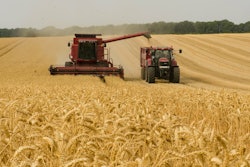
一般可能是知道正确的土壤混合涂料sition can lead to higher yielding crops that enter the food system.
But the right soil composition can actually do more than just help producersgrow more crops, but also grow better crops.
Nikki Putnam Badding, while speaking on May 23 at theAlltech One Conference, explained how the right soils can actually translate to better human health.
Badding, managing director and chief dietitian ofAcutia, has worked to help farmers across the globe to apply the lens of human nutrition to agricultural practices for the improved health of plants, animals and humans alike.
The problem of malnutrition
Badding noted that one in four people are malnourished. In some cases, it is because of a lack of food. But in other cases it is because the food they are consuming is nutrient-deficient.
“这是足以养活世界。或者说than feed the world, do we need to provide nutrition for all and change the dialogue from food security to nutrition security,” she rhetorically asked.
“Agriculture truly has the opportunity to be the world’s hero. To be the solution to malnutrition. To place nutritional quality at the heart of agricultural practices,” she added.
Badding acknowledged the Green Revolution and the positive impact it had on the global society, saving a billion people from dying from starvation and increasing food yields by 44% between 1965 and 2010. But as good as that is, Badding said that may not be enough. The drawback of the Green Revolution is that it encouraged global food systems to focus on calories, rather than nutrition.
She asked if the global agrifood sector can deliver both quantity and quality. She also gave an answer, which is yes.
It starts with the soil
Badding believes one of the best ways to battle the global malnutrition problem is through the soil.
She noted that in 1938, the United States Department of Agriculture stated that the soil was the origin for essential nutrients for human health. She pointed out that there are 14 nutrients that are essential for plant health that are also essential for human health.
And deficiencies of four of those nutrients are common. Those are iodine, selenium, iron and zinc.
“There are some really interesting case studies found globally that show use of micronutrient enriched fertilizers or select regenerative farming practices we can actually bring those nutrients back to the soil, (and) back to the plants,” she said.
Nutrient density
She cited a study from theBionutrient Institutethat surveyed crops and created a spectrum of crops that were grown with nutrient density in mind, and those that were grown with it not in mind. Those at the high end of the spectrum were exponentially more nutrient-dense.
While she spoke mostly of crops that are eaten by humans, she said the same is true of feedstuffs.
“What about the plants out there that we as humans can’t utilize?" Badding asked. "We can’t digest them, we can’t pull nutrition from them.
"That’s where livestock comes in," she continues. "Livestock are natures original upcyclers. They take plantstuffs that our bodies don’t want anything to do with, and they create highly bioavailable nuitrient-dense, protein packed meat, dairy and eggs.
The advantage that not only these terrestrial animal products have, but also aquaculture, the advantage that they have is they create extremely bioavailable nutrients for our use.
“Animal products really pack a punch, particularly from the bioavailability standpoint," said Badding.
"We can actually enrich an animal diet with micronutrients or essential fatty acids, and we can see those nutrients expressed in the meat, milk, eggs and fish that they produce.
"So, if we look at a selenium deficient part of the world, we can actually enrich the animal’s diet the dairy cow’s diet with selenium and see the selenium expressed in the milk. Now we have selenium-enriched milk, cheese, yogurt to help address those micronutrient deficiencies.”


















![Logan And Jerry Fitch[1]](https://img.feedandgrain.com/files/base/wattglobalmedia/all/image/2023/05/Logan_and_Jerry_Fitch_1_.6470faf6bcc37.png?auto=format%2Ccompress&fit=crop&h=112&q=70&w=112)



